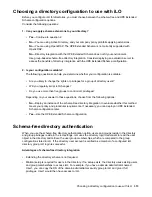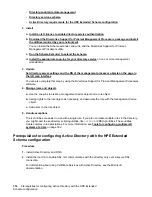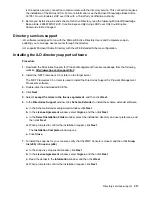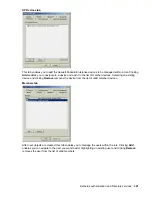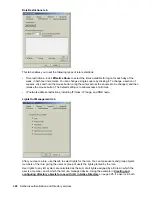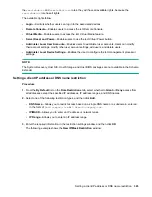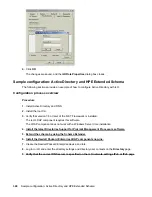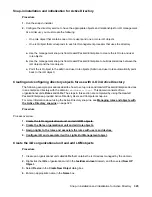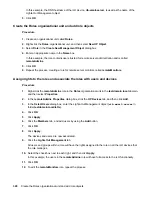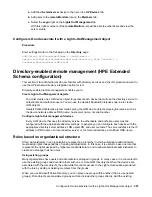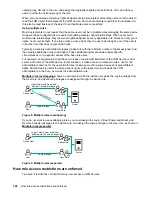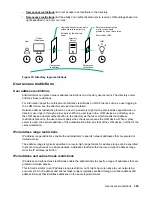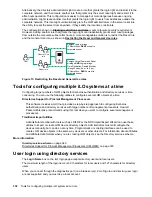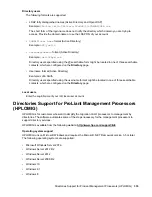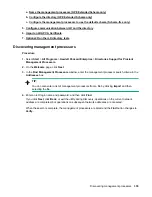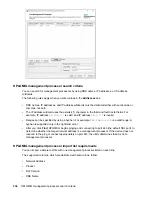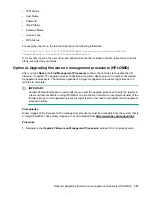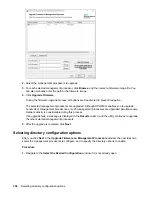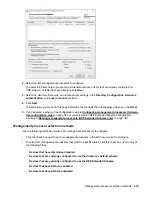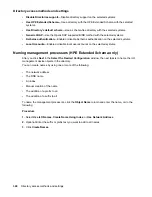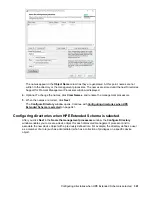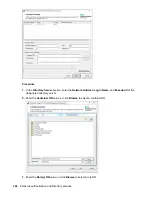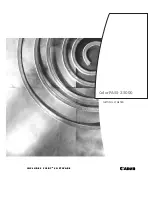
a.
Add the
rib-email-server
device to the list on the
HP Devices
tab.
b.
Add users to the
remoteMonitors
role on the
Members
tab.
c.
Select the
Login
right on the
Lights Out Management
tab.
With this right, members of the
remoteMonitors
role will be able to authenticate and view the
server status.
Configure iLO and associate it with a Lights-Out Management object
Procedure
Enter settings similar to the following on the
Directory
page:
LOM Object Distinguished Name = cn=rib-email-
server,ou=ILOs,dc=testdomain,dc=local Directory User Context 1 =
cn=Users,dc=testdomain,dc=local
Directory-enabled remote management (HPE Extended
Schema configuration)
This section is for administrators who are familiar with directory services and the iLO product and want to
use the HPE schema directory integration option for iLO.
Directory-enabled remote management enables you to:
Create Lights-Out Management objects
You must create one LOM device object to represent each device that will use the directory service to
authenticate and authorize users. You can use the Hewlett Packard Enterprise snap-ins to create
LOM objects.
Hewlett Packard Enterprise recommends giving the LOM device objects meaningful names, such as
the device network address, DNS name, host server name, or serial number.
Configure Lights-Out management devices
Every LOM device that uses the directory service to authenticate and authorize users must be
configured with the appropriate directory settings. In general, you can configure each device with the
appropriate directory server address, LOM object DN, and user contexts. The server address is the IP
address or DNS name of a local directory server or, for more redundancy, a multihost DNS name.
Roles based on organizational structure
Often, administrators in an organization are placed in a hierarchy in which subordinate administrators
must assign rights independently of ranking administrators. In this case, it is useful to have one role that
represents the rights assigned by higher-level administrators, and to allow subordinate administrators to
create and manage their own roles.
Using existing groups
Many organizations have users and administrators arranged in groups. In many cases, it is convenient to
use the existing groups and associate them with one or more LOM role objects. When the devices are
associated with the role objects, the administrator controls access to the Lights-Out devices associated
with the role by adding or deleting members from the groups.
When you use Microsoft Active Directory, you can place one group within another (that is, use nested
groups). Role objects are considered groups and can include other groups directly. Add the existing
Configure iLO and associate it with a Lights-Out Management object
327

